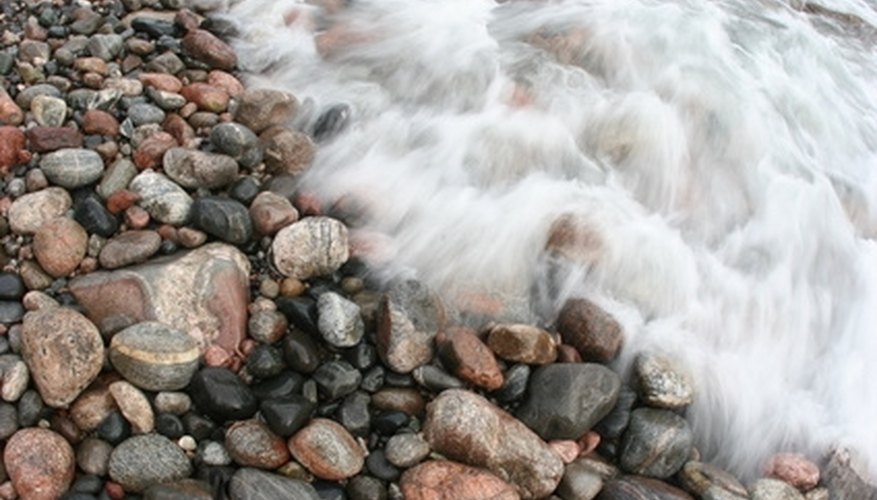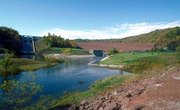
The Lake Superior agate was formed during lava eruptions that occurred about a billion years ago. Hunting for the stone is a popular hobby among many gem collectors. Lake Superior agates are widely distributed along the lake's surrounding areas. Popular searching areas include mouths of rivers, gravel pits, banks of streams and in places where many gravel and pebbles are present.
Look for iron-oxide staining found on nearly all agates. According to the Minnesota Department of Natural Resources, the most common shades of iron-oxide stains found in Lake Superior agates are yellow, orange and rust-red.
Search for glossy, waxy stones on chipped or broken surfaces. This is a tell-tale sign of Lake Superior agates.
Feel the texture. Lake Superior agates tend to have a pitted texture covering the rock surface. These pits are clues from the agates' history. They are the projections from the rock's first layer of softer mineral matter.
Observe the way the stone reflects sunlight. Agates allow light to penetrate producing a glow. This is an optical feature caused by the stone's chalcedony quartz properties.
Search for band planes. Lake Superior agates have bands along the surface giving it a peeled texture. This appearance is similar to a partially peeled-off banana skin.
Investigate the shape. Lake Superior agates are typically irregularly circular in shape. Agates are made up of quartz and deposited in layers creating circles that resemble rings on a tree's cross section.
Tips
- Search for Lake Superior agates in Mississippi River grounds and other bodies of water that empty into Lake Superior.
- Look at places with exposed rocks and gravel.
References
Tips
- Search for Lake Superior agates in Mississippi River grounds and other bodies of water that empty into Lake Superior.
- Look at places with exposed rocks and gravel.
Writer Bio
Rona Aquino began writing professionally in 2008. As an avid marathon runner and outdoor enthusiast, she writes on topics of running, fitness and outdoor recreation for various publications. Aquino holds a Bachelor of Arts in communications and English from the University of Maryland College Park.



